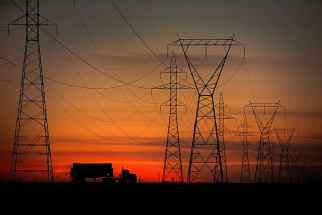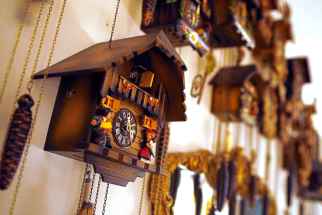NEB approves Manitoba Hydro’s proposed link to Minnesota
Read this article for free:
or
Already have an account? Log in here »
To continue reading, please subscribe:
Monthly Digital Subscription
$19 $0 for the first 4 weeks*
- Enjoy unlimited reading on winnipegfreepress.com
- Read the E-Edition, our digital replica newspaper
- Access News Break, our award-winning app
- Play interactive puzzles
*No charge for 4 weeks then billed as $19 every four weeks (new subscribers and qualified returning subscribers only). Cancel anytime.
Read unlimited articles for free today:
or
Already have an account? Log in here »
Hey there, time traveller!
This article was published 14/11/2018 (1988 days ago), so information in it may no longer be current.
The National Energy Board has given the green light to Manitoba Hydro to build a transmission line to Minnesota — subject to 28 conditions.
In a decision announced after the markets closed Thursday, the NEB released a 190-page report on the Manitoba-Minnesota Transmission Project.
Before the 213-kilometre, 500-kilovolt line — that would run to near the village of Piney at the American border, where it would link up with the Great Northern Transmission line in the U.S., from the Dorsey converter station northwest of Winnipeg — can go ahead, it needs federal government approval and the provincial government to issue a licence.

In a teleconference Thursday, two NEB officials gave the reasons for the quasi-judicial board’s approval of the project.
They said after hearing arguments for and against the line, the board decided environmental and Indigenous concerns could be mitigated and there was an economic benefit to the province if it granted approval.
“The board was satisfied that the economic impact can be positive compared to the project not being built,” NEB chief economist Jean-Denis Charlebois said.
The board’s chief environment officer, Robert Steedman, said it is satisfied issues raised by Indigenous communities can be fairly addressed. At least 20 per cent of the project’s “content” — including jobs and materials — has to be Indigenous.
Work on the line will be conducted when the ground is frozen to reduce the potential effects on the environment, outside of bird breeding and ungulate (hoofed animal) calving season, Steedman said.
Manitoba Hydro first pitched its project description for a transmission line to Minnesota to the NEB in October 2015. The transmission project seeks to give Hydro more leeway to market electricity to the U.S.
The Crown corporation hopes to have the line in service by 2020.
“We’re pretty pleased with the NEB’s decision,” Hydro spokesman Scott Powell said Thursday. He couldn’t say how long it might take before the line starts getting built, nor what meeting the 28 conditions will require.
“We’re currently studying the document,” Powell said.
The MMTP has been subject to multiple hearings from the Manitoba Clean Environment Commission and the NEB.
Manitobans, including First Nations that would be affected by construction of the line, voiced their concerns in both processes.
The Manitoba Metis Federation has said it made a deal with Hydro to be paid $67.5-million over 50 years, so as not to oppose the MMTP and as compensation for other past and future Hydro projects.
Hydro referred to the proposed deal as little more than a “term sheet.” Premier Brian Pallister described the arrangement as “hush money,” and spiked the idea.
The MMF is now fighting the matter in court. On Thursday, the NEB said it couldn’t comment on the matter, as it is between the province and Métis federation.
— with files from Jessica Botelho-Urbanski

Carol Sanders
Legislature reporter
After 20 years of reporting on the growing diversity of people calling Manitoba home, Carol moved to the legislature bureau in early 2020.













